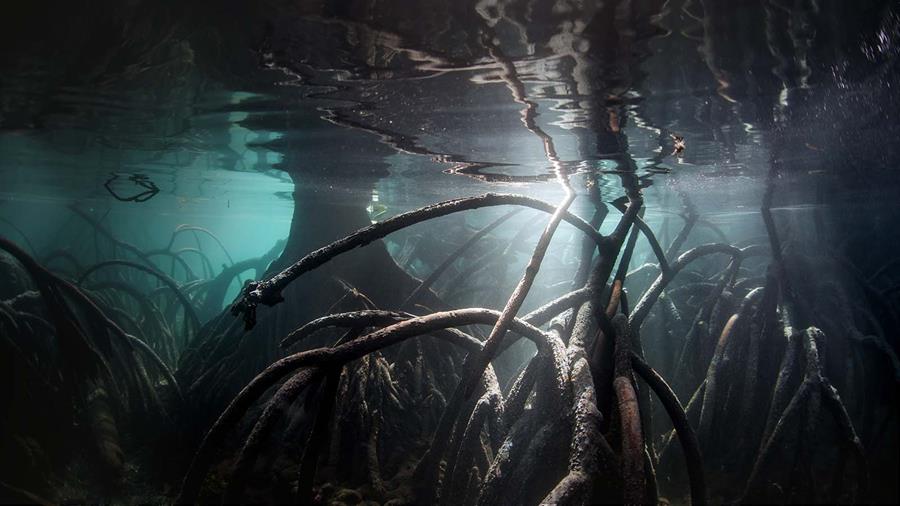Partnerships for Nature: insights from Indigenous-led models in Canada
15 April 2025 / WORDS BY Pollination Foundation
read article
London+44 203 355 1556
Sydney+61 2 8313 7109
Melbourne +61 2 8313 7109
Washington +1 872 201 1168
In this second edition of Nature Finance Focus, we highlight a number of models that are helping to unlock and scale nature investment. Some models are well established, alongside others in which we see significant promise and growth. By showcasing these tangible case studies, we aim to provide ideas and options which can be taken up by the global bank or investor, or by the major corporate.
The report also details the findings of our biennial survey of 500 institutional investors across the UK, USA, Australia, Singapore and Japan.
View reportFour years ago, when Climate Asset Management launched as a joint venture between HSBC and recently formed consultancy Pollination, it laid out ambitious plans to become the biggest investor dedicated to natural capital.
05 May 2022 / WORDS BY Veda FitzSimons, Associate and Pollination
MAKING THE HEADLINES THIS MONTH
LATEST FROM THE IPCC
The Intergovernmental Panel on Climate Change has just released in quick succession its the latest working group reports – one last month on adaptation and one today on mitigation. Though sobering reading, they set out how safeguarding and strengthening nature is key to securing a liveable future. More below.
A PLAN FOR PLASTICS
At the UN Environment Assembly this month, 175 nations agreed to work on a legally binding treaty to improve recycling, clean up plastic waste and curb plastics production. This could see measures like a ban on single-use plastics on the table. There are hopes for a global deal by 2024.
BIODIVERSITY LIABILITY LOOMS IN THE EU
The European Commission has adopted a proposal for a Directive on Corporate Sustainability Due Diligence. If approved, it would see large companies responsible for measures preventing biodiversity loss as a result of activities in their value chains, and where they fail to do so, they could face litigation in European courts.
COP15 POSTPONED, AGAIN
Biodiversity COP15 has been further delayed. Originally planned to be held in Kunming, China in 2020, the conference was COVID delayed. New dates are yet to be announced, though it’s expected to land in the “third quarter” of this year.
POLLINATION PERSPECTIVES
By Veda FitzSimons, Associate
The third volume of the Intergovernmental Panel on Climate Change’s 2022 report landed today, after several years of work by the world’s leading scientists, and weeks of line-by-line reviews by scientists and government delegates. Its focus is on mitigation, and it follows a report last month on adaptation.
What is clear from both reports is that climate change is already having a devastating impact on nature, and there is evidence that we are butting up to the hard limits of some ecosystems’ capacity to adapt. Plainly, on both the mitigation and adaptation fronts our efforts so far have not been nearly enough. The report today states that the average annual investment required is three to six times greater than current levels if we are to limit warming to 2°C or 1.5°C.
It also highlights the critical role natural climate solutions can and must play in mitigation. Along with clean electricity, the report identifies agriculture, forestry and land use (AFOLU) as the sectors where the earliest emissions reductions can be achieved – putting them ahead of industry and transport.
In numbers, the projected mitigation potential of agriculture, forestry and land use options – costing less than USD$100 per tonne of CO2e – is 8-14 gigatonnes of CO2e per year (roughly a quarter of current annual global emissions). 30 to 50 per cent of this potential is available at less than USD$20 and could be upscaled in the near term across most regions.
Beyond mitigation, the report last month also highlighted how critical nature will be in adaptation – from trees cooling cities to mangrove forests acting as a buffer for coastal floods (more on these amazing ecosystems and carbon stores below). Around 30 to 50 per cent of Earth’s surface needs to be effectively conserved to build resilience against climate change, the report found.
Whether in mitigation or adaptation, the science tells us that nature is a critical solution.
TNFD releases first guidance on nature risk
For corporates, nature is complex to grapple with – far more complex than climate. Nevertheless, investor expectations on nature risk are already building, and we believe companies and financial institutions will be expected to respond much more quickly than they did on climate. This is in part because the nature response is leveraging the climate playbook.
In this context, the just-published ‘beta’ version of the Taskforce for Nature-related Financial Disclosures (TNFD) framework is particularly welcome.
The TNFD is asking organisations across different sectors and geographies to test and provide feedback on the Beta v0.1 framework. There are certainly synergies with the approach of the Task Force on Climate-Related Financial Disclosures (TCFD) that many organisations are already using. However, the TNFD also clearly outlines where there are important differences when it comes to nature risk, notably the so-called ‘double materiality’ of risk and dependency on nature.
The framework sets out how companies can assess their impacts and dependencies, understand the risks and opportunities associated with these, and consider future disclosures as appropriate.
Although the extent of nature loss from climate change is already devastating – as the latest from the IPCC attests – the TNFD Beta v0.1 provides a framework for us to understand and assess cumulative nature risk across a broader set of drivers including land-use change, pollution, natural resource use and exploitation, and invasive species. This more comprehensive view is a crucial underpinning to the global response to nature loss.
Though the final TNFD framework is not due to be published until 2023, this beta version provides enough to get started, and at Pollination, we’re already working with clients to begin the TNFD alignment journey. These include consumer goods, agriculture and infrastructure companies, and private equity firms.

FOOD FOR THOUGHT
The superpowers of blue carbon
As both the IPCC report and TNFD highlight, the climate and nature crises are intrinsically linked. The good news is that the solutions can be interlinked too.
Earlier this month the world’s largest mangrove restoration project made headlines, as it was announced that the first “blue carbon” credits from project had been sold. Pollination is a long-term advisor to the project, developed by Indus Delta Capital and the Government of Sindh. Blue carbon is the carbon stored in coastal and marine ecosystems, including mangroves, seagrasses and tidal marshes – and is a powerful climate change solution. Mangroves for example, can sequester carbon at up to four times the rate of trees.
This particular project is unlike any other in scale – spanning 350,000 hectares of tidal wetlands in the Sindh province of Pakistan, an area bigger than Luxembourg.
It’s a proof point of nature-based solutions working at the scale required to tackle the twin crises of climate change and biodiversity loss – and cause for hope.

SOIL SOUNDS
Ecologists have long known that the ground beneath our feet is home to more life, and more diverse life, than almost any other place on Earth.
In just a cup of dirt, researchers have counted up to 100 million life forms, from more than 5,000 taxa. Today, in a relatively new field known as soil bioacoustics, a growing number of biologists are capturing underground noises to open a window into this complex and cryptic world.
We humans might be among the last to discover this underground soundtrack. Birds can often be seen hopping across lawns with their heads cocked. Researchers believe that they do this because they’re listening for worms below. Often, they peck at the soil at just the right moment to pull up their unsuspecting quarry. The North American wood turtle, for its part, capitalizes on the attention that worms pay to vibrations from the patter of rain. The turtle stomps its feet on the ground to mimic that patter so the worms come to the surface, providing a juicy snack.
This article is a wonderful explainer of our burgeoning understanding of this underground labyrinth: Life in the soil was thought to be silent. What if it isn’t?
15 April 2025 / WORDS BY Pollination Foundation
read article
Receive latest news and global perspectives from Pollination.
By clicking submit, you agree to our Terms & Conditions.